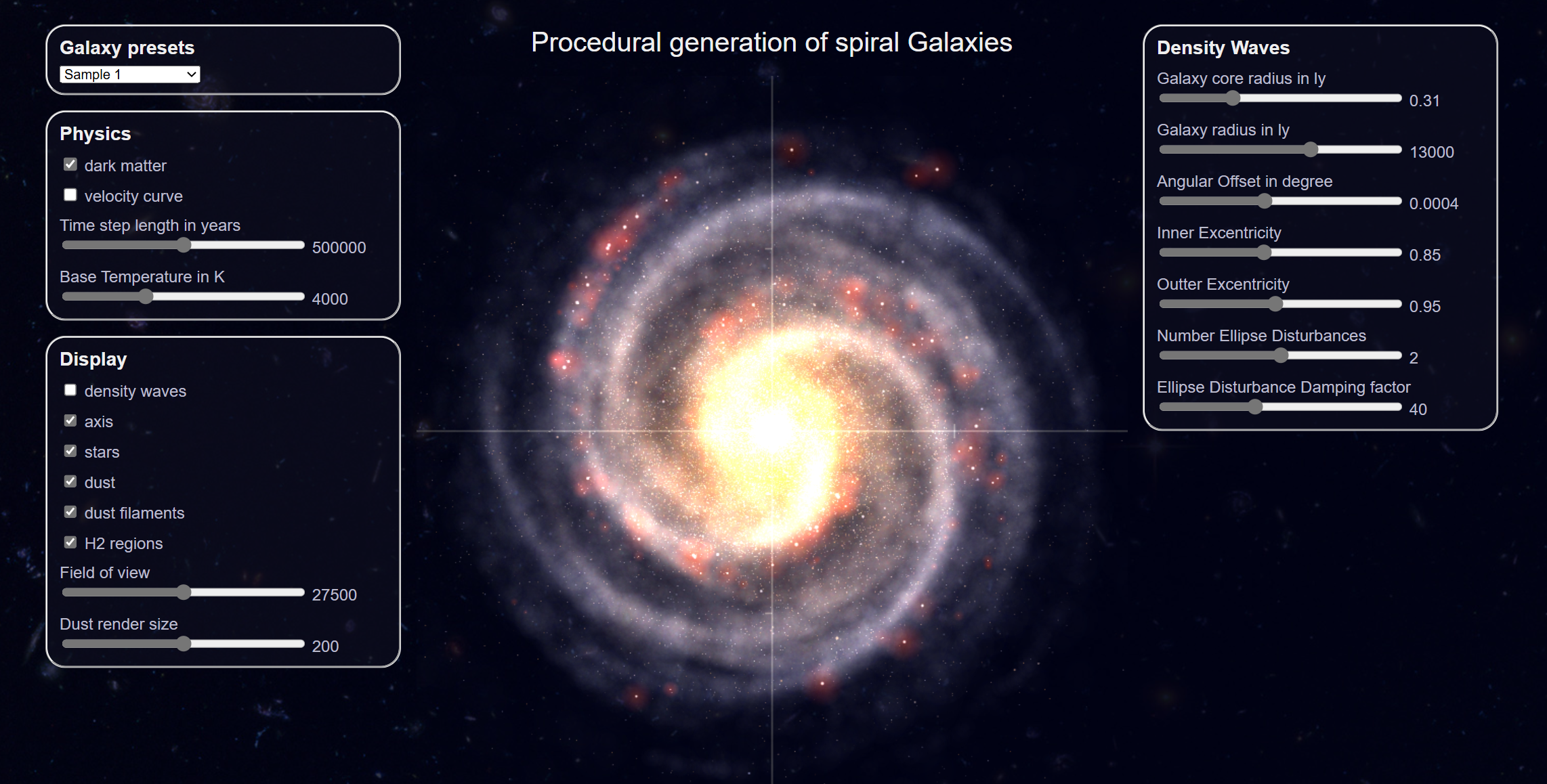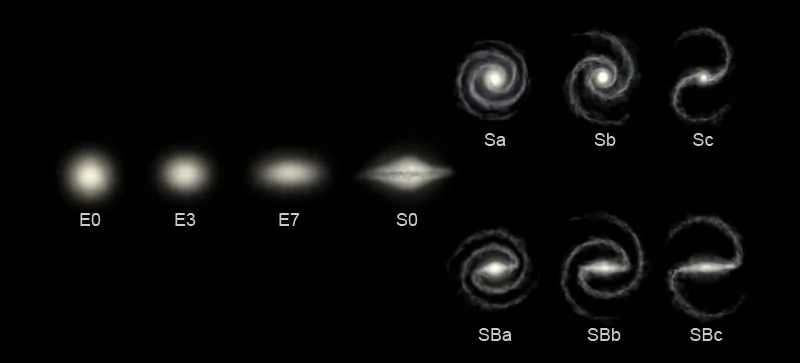Interactive three-dimensional simulations & visualizations
Visualizing the beauty in physics and mathematics
Project maintained by zhendrikse Hosted on GitHub Pages — Theme by mattgraham
Spiral galaxy visualization
- Original galaxy_3d_Medium.py by Lee Vaughan
- The (theory behind the) code is thoroughly explained in his accompanying article
- This spiral_galaxy.html page is a port to Javascript and Three.js
- Javascript version has been extended with colouring and fading (Zeger Hendrikse)
- Core / Bulge (Central Region): yellow-white to reddish color, since the core is populated mostly by older stars (Population II), which are cooler and more evolved.
- Mid-to-Outer Disk (Arms): bluish-white color, because the spiral arms host young, hot, and massive stars (Population I), which are blue and short-lived. Also, star-forming regions and nebulae contribute a diffuse glow.
- Outer Halo: dim red to transparent, as this region contains very old stars and globular clusters, often too dim to be noticeable.
- I have also ported the original code to VPython, see spiral_galaxy.py
Spiral galaxy renderer
On this site, you can also find a live demo of a way more advanced 2D spiral galaxy simulator that is based on the density wave theory (on GitHub → Galaxy renderer). It is written by Ingo Berg in Typescript. Click on the image below to activate this demo!

About spiral galaxies
Hubble distinguished between elliptical galaxies and spiral galaxies. The elliptical galaxies were rated based on their eccentricity and given identifiers ranging from E0 to E7 with the eccentricity increasing towards E7. The type S0 is an intermediary form of galaxy that marks the transition to the spiral galaxies. Spiral galaxies were separated into two categories on their own. The spiral galaxies and (Sa bis Sc) and the barred spiral galaxies (SBa bis SBc). — Rendering a Galaxy with the density wave theory

Share on: